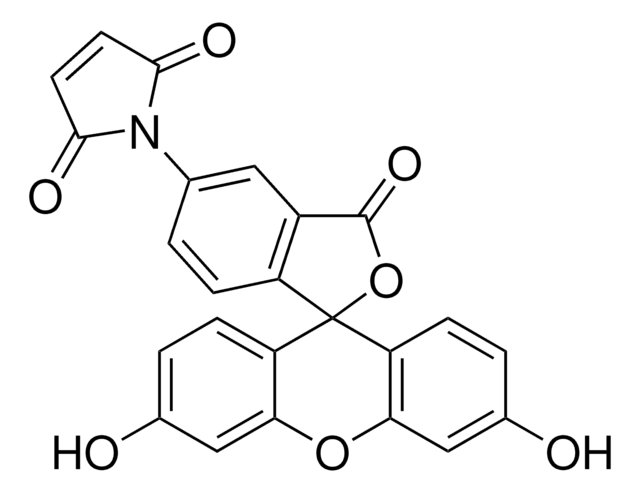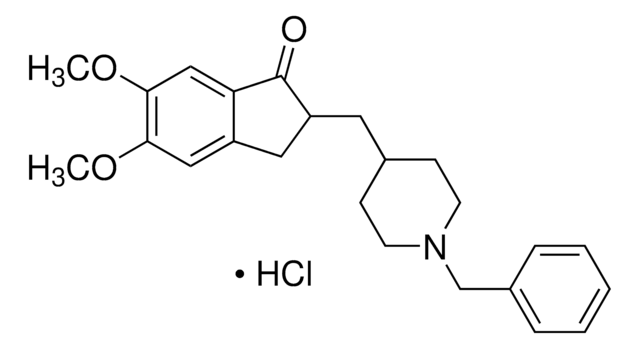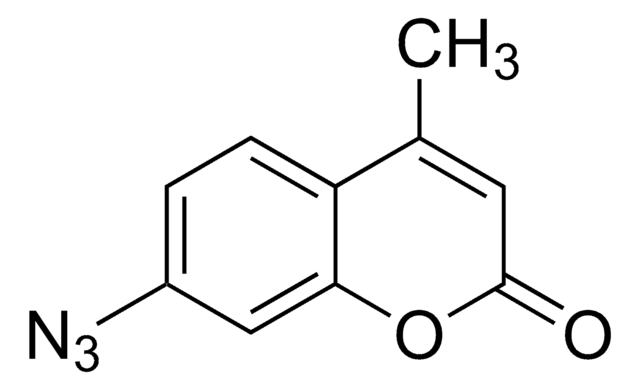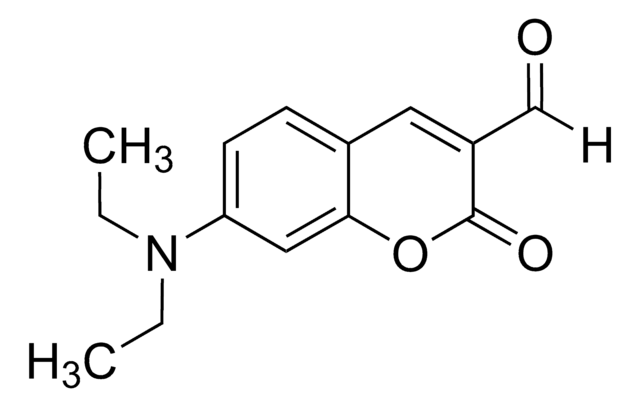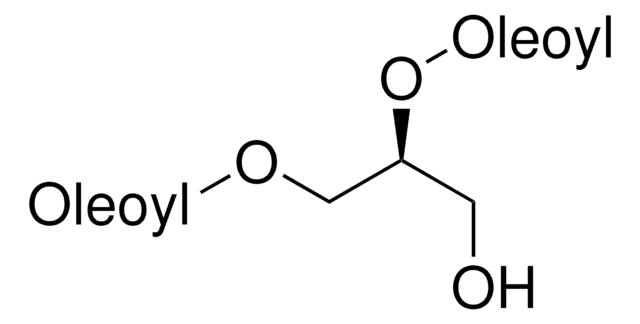C1484
7-Diethylamino-3-(4-maleimidophenyl)-4-methylcoumarin
≥95% purity (HPLC), solid
Synonyme(s) :
1H-Pyrrole-2,5-dione, 1-(4-(7-(diethylamino)-4-methyl-2-oxo-2H-1-benzopyran-3-yl)phenyl)-, CPM
About This Item
Produits recommandés
Nom du produit
7-Diethylamino-3-(4-maleimidophenyl)-4-methylcoumarin, ≥95% (HPLC), solid
Niveau de qualité
Essai
≥95% (HPLC)
Forme
solid
Technique(s)
titration: suitable
Couleur
yellow
Solubilité
DMSO: soluble
methanol: soluble
Application(s)
diagnostic assay manufacturing
hematology
histology
Température de stockage
−20°C
Chaîne SMILES
CCN(CC)c1ccc2C(C)=C(C(=O)Oc2c1)c3ccc(cc3)N4C(=O)C=CC4=O
InChI
1S/C24H22N2O4/c1-4-25(5-2)18-10-11-19-15(3)23(24(29)30-20(19)14-18)16-6-8-17(9-7-16)26-21(27)12-13-22(26)28/h6-14H,4-5H2,1-3H3
Clé InChI
YGIABALXNBVHBX-UHFFFAOYSA-N
Vous recherchez des produits similaires ? Visite Guide de comparaison des produits
Description générale
Application
- as a nontoxic substitute for conjugation with antibody(93)
- to aid fluorescent detection of Coenzyme A (CoA-SH) in human N-myristoyltransferases assay (94)
- in thermostability shift assay of recombinant protein(95)
Actions biochimiques/physiologiques
Code de la classe de stockage
11 - Combustible Solids
Classe de danger pour l'eau (WGK)
WGK 3
Point d'éclair (°F)
Not applicable
Point d'éclair (°C)
Not applicable
Équipement de protection individuelle
Eyeshields, Gloves, type N95 (US)
Faites votre choix parmi les versions les plus récentes :
Déjà en possession de ce produit ?
Retrouvez la documentation relative aux produits que vous avez récemment achetés dans la Bibliothèque de documents.
Les clients ont également consulté
Notre équipe de scientifiques dispose d'une expérience dans tous les secteurs de la recherche, notamment en sciences de la vie, science des matériaux, synthèse chimique, chromatographie, analyse et dans de nombreux autres domaines..
Contacter notre Service technique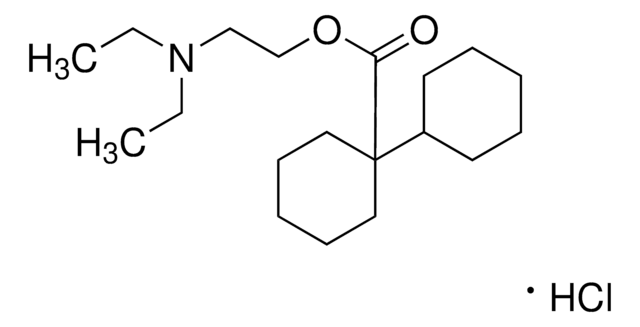
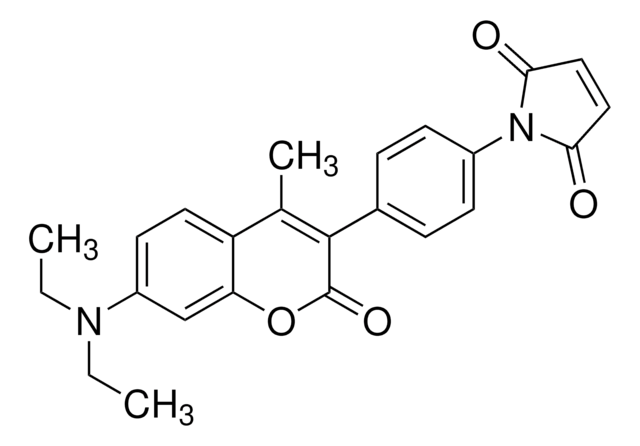
![N-[2-(Dansylamino)ethyl]maleimide BioReagent, suitable for fluorescence, ≥99.0% (HPLC)](/deepweb/assets/sigmaaldrich/product/structures/318/294/efefa674-7883-4fc7-ad57-ea90ff85069a/640/efefa674-7883-4fc7-ad57-ea90ff85069a.png)
